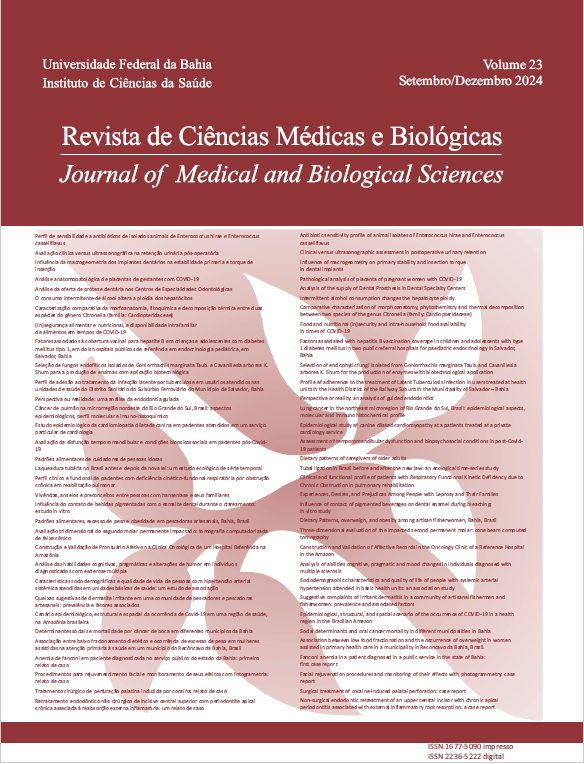Perfil de sensibilidade a antibióticos de isolados animais de Enterococcus hirae e Enterococcus casseliflavus
DOI:
https://doi.org/10.9771/cmbio.v23i3.64806Keywords:
infectologia veterinária;Abstract
Introduction: bacteria of the genus Enterococcus spp. are notorious for their intrinsic and acquired resistance to several antibiotics, which makes it challenging to treat the infections they cause. While E. hirae rarely infect felines, there are no reports of E. casseliflavus in snakes. Objectives: to evaluate the antibiotic sensitivity profile of isolates of these bacteria. Methodology: bacteria were isolated from the urine of a feline and from a swab of a rattlesnake's dermal wound. The sensitivity profile of these isolates was defined by a disk diffusion test and evaluated according to the recommendations of specialised institutes. Results: the isolate from the feline's urine was identified as Enterococcus hirae, while the isolate from the rattlesnake's dermal swab was identified as Enterococcus casseliflavus. Conclusion: the results showed resistance to different antibiotics, highlighting the complexity of treating infections caused by these bacteria.
Downloads
Downloads
Published
How to Cite
Issue
Section
License
Copyright (c) 2024 Journal of Medical and Biological Sciences

This work is licensed under a Creative Commons Attribution 4.0 International License.
The Journal of Medical and Biological Sciences reserves all copyrights of published works, including translations, allowing, however, their subsequent reproduction as transcription, with proper citation of source, through the Creative Commons license. The periodical has free and free access.


